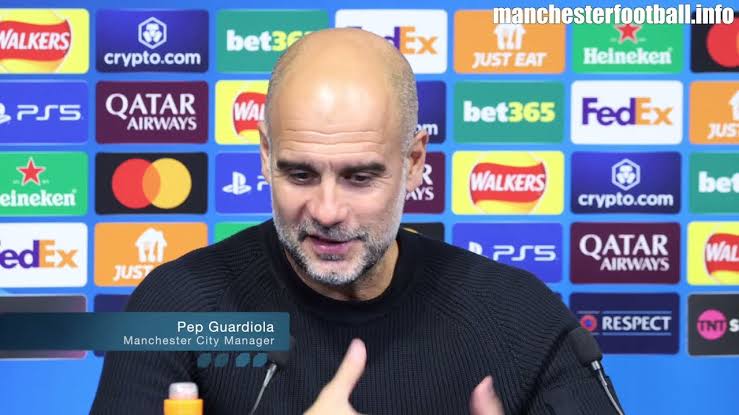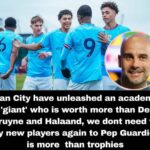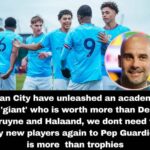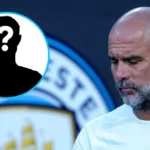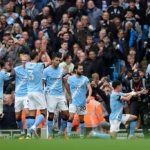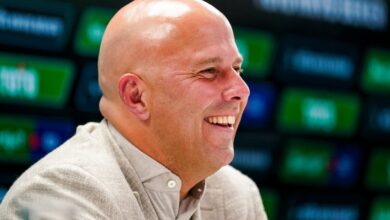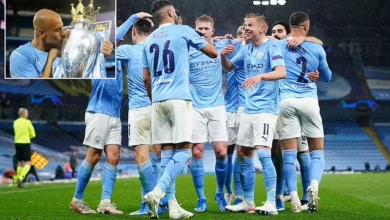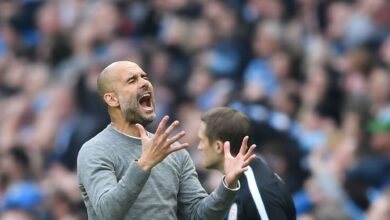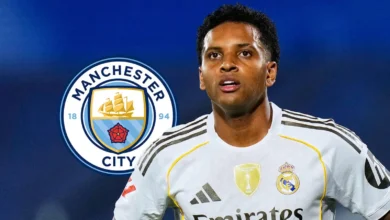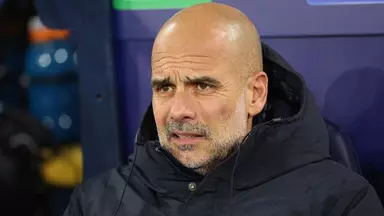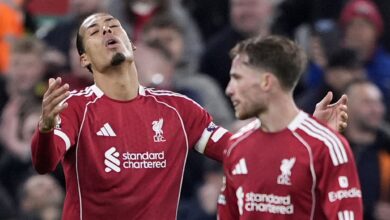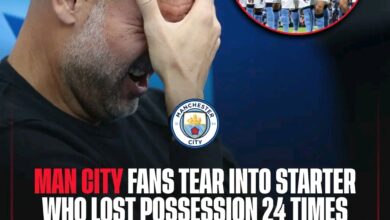Man City have unleashed an academy ‘giant’ who is worth more to Pep Guardiola than trophies
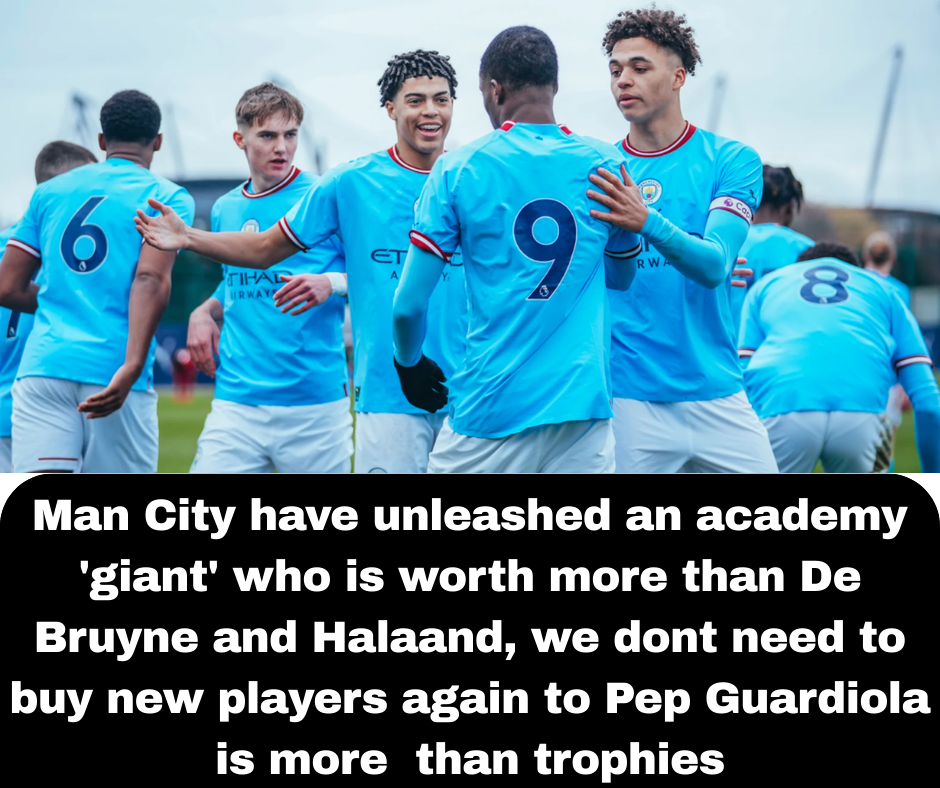
In the dazzling constellation of stars that form Manchester City’s multi-billion-pound squad, it’s rare that an academy graduate can shine brightly enough to catch the eye. Yet as the 2024-25 season reaches its climactic stages, with trophies still hanging in the balance, one of the most compelling narratives at the Etihad has been the meteoric rise of 20-year-old Nico O’Reilly – a player who has defied conventional wisdom by transforming from an attacking midfielder prospect into Pep Guardiola’s solution at left-back.
The academy at the City Football Academy has long been heralded as state-of-the-art, a £200 million investment designed to nurture the next generation of footballing talent. This season, it came agonizingly close to securing back-to-back FA Youth Cups, only to fall at the final hurdle against Aston Villa on Monday. The youth teams’ achievements remain remarkable nonetheless – a 27-game winning streak at Under-18 level speaks volumes about the quality being developed behind the scenes, with silverware still potentially on the horizon for both the Under-18s and Under-21s before the season concludes.
However, amid these collective successes, O’Reilly’s individual journey stands as the academy’s crowning achievement of the campaign – a triumph of patience, development, and the club’s unwavering belief in talent that sometimes needs time to flourish.
An Unconventional Journey
O’Reilly’s path to the first team defies the traditional narrative of seamless progression that is often manufactured in retrospect once a player breaks through. Speaking with academy staff reveals a more nuanced story – one where the midfielder’s extraordinary potential was recognized early, but where significant hurdles threatened to derail his development.
“He’s had a journey in terms of actual development. It’s not like a linear journey,” Under-21s coach Ben Wilkinson told the Manchester Evening News, offering rare insight into the challenges faced during O’Reilly’s formative years at the club.
The turning point came during his scholarship period. After completing his first year, serious questions emerged about his developmental trajectory. While his technical ability had never been in doubt, physical concerns had created genuine uncertainty about whether he could make the leap to senior football.
“In his second year of Under-18s two years ago, he stayed with the Under-18s rather than going up because he was a boy who, when you looked at him, he still hadn’t grown anywhere into his body,” Wilkinson explained. “He needed a little bit more time because you could see that he was just starting to come and he had the potential to be a real physical specimen, but he was a long way from being there. He needed careful management in that year as he grew, to try and keep him fit and adapt to his body.”
This patient approach represents a critical aspect of Manchester City’s youth development philosophy under Guardiola’s tenure. Rather than pushing talented youngsters too quickly – a practice that has historically led to burnout and unfulfilled potential across the football landscape – the club implemented a bespoke program designed to accommodate O’Reilly’s physical maturation while nurturing his technical gifts.
Academy coaches worked meticulously with the sports science department to create an individualized training regimen that would allow O’Reilly’s frame to develop naturally while progressively increasing the physical demands placed upon him. This careful calibration of training load, recovery protocols, and technical development proved transformative.
Catching Guardiola’s Eye
By the summer of 2024, O’Reilly had physically transformed. The gangly teenager had evolved into what one academy coach described as “a giant, a fantastic athlete.” This physical metamorphosis, combined with his already exceptional technical foundation, caught Guardiola’s discerning eye during pre-season preparations.
The Catalan manager, renowned for his exacting standards and uncompromising approach to player development, saw enough to include O’Reilly in the senior squad’s pre-season tour – a significant vote of confidence in a player who had been considered physically questionable just months earlier.
“Pep doesn’t hang around with people that don’t add to the squad,” noted an academy coach who has watched O’Reilly’s development closely. “If you’re young and excited to come in, if you don’t produce or behave like a first team player, you don’t last long.”
This assessment highlights one of the most overlooked aspects of breaking through at a club of Manchester City’s stature. Beyond technical and physical attributes, the psychological resilience required to train alongside world-class players day after day – often with limited playing opportunities – tests the mental fortitude of even the most talented prospects.
For much of the 2024-25 season, O’Reilly demonstrated this patience in abundance. Despite being formally promoted to the first-team squad, meaningful minutes proved elusive. His start against Salford City in the FA Cup in January represented just his third appearance of the campaign, and as recently as March, the youngster found himself left out of matchday squads entirely as Guardiola prioritized the 20 players he felt were most crucial to the team’s ambitions.
The Bournemouth Breakthrough
Everything changed on that pivotal March afternoon at the Vitality Stadium. With City trailing 1-0 to Bournemouth in their FA Cup quarter-final – their hopes of an unprecedented second consecutive domestic treble hanging by a thread – Guardiola made what seemed, at the time, a desperate substitution. O’Reilly was introduced at left-back, a position entirely foreign to the natural attacking midfielder.
What followed has since entered City folklore. The academy graduate delivered two match-winning assists, orchestrating a dramatic comeback that not only preserved the team’s cup ambitions but fundamentally altered his standing within the squad. The tactical gamble by Guardiola revealed an unexpected versatility in O’Reilly’s game that has since become invaluable to a team battling injuries in defense.
“Sometimes in football, necessity breeds invention,” explains former City defender Joleon Lescott, who has followed O’Reilly’s emergence closely. “Pep has always valued players who can understand and implement multiple positions. What’s remarkable about Nico is how quickly he’s adapted to the defensive responsibilities while still offering so much going forward. It’s a testament to both his intelligence and the coaching he’s received throughout the academy system.”
In the seven matches since that Bournemouth revelation, O’Reilly has been an ever-present in the starting lineup – remarkably establishing himself ahead of established internationals like John Stones and Nathan Ake in terms of minutes played. More impressively still, City have recorded five clean sheets in those seven fixtures, with goals conceded in just two matches – a defensive record that has rejuvenated their season across multiple competitions.
Tactical Innovation
What makes O’Reilly’s adaptation to left-back particularly fascinating is how it exemplifies Guardiola’s evolving tactical approach in his final years at the Etihad. The position, in Guardiola’s system, has become increasingly nuanced – requiring not just defensive solidity but the ability to invert into midfield spaces, create numerical overloads, and contribute meaningfully to the team’s possession structure.
Former City captain Vincent Kompany, now establishing himself as a promising manager, recently analyzed O’Reilly’s positional play: “What’s exceptional is his spatial awareness. When you convert from an attacking midfielder to a defender, that’s usually the biggest challenge – understanding when to hold your position and when to advance. Nico seems to have a natural instinct for it, which is rare.”
This spatial intelligence allows O’Reilly to seamlessly transition between traditional left-back duties and more central midfield responsibilities – often within the same phase of play. Against Arsenal last month, tracking data revealed that he spent almost 40% of City’s possession in central midfield zones, before diligently returning to his defensive station when the team lost the ball.
It’s a role that has drawn comparisons to how Guardiola previously utilized Philipp Lahm at Bayern Munich and, more recently, João Cancelo during City’s dominant 2021-22 campaign. However, O’Reilly brings his own distinct interpretation to the position – one that perhaps reflects the evolution of Guardiola’s thinking in his ninth season at the club.
“He’s providing solutions we didn’t know we needed,” admitted one of Guardiola’s coaching staff. “When we lost [João] Cancelo and then had injuries to Nathan [Ake] and [John] Stones, we were concerned about how to maintain our build-up patterns. Nico has different qualities – he’s not as explosive as Cancelo but he’s more patient in possession, which has actually helped our control in certain games.”
The Physical Transformation
Behind O’Reilly’s tactical adaptation lies an equally remarkable physical metamorphosis. Academy staff who worked with him during his developmental years speak of a methodical approach to building his frame – one that prioritized long-term athletic development over short-term gains.
“Three years ago, you wouldn’t have recognized him,” reveals a strength and conditioning coach who worked closely with O’Reilly. “He was all potential – tall but slight, with a frame that clearly had room to develop but hadn’t filled out yet. What’s impressive is how he’s embraced every aspect of the physical program we designed for him.”
That program included specialized resistance training focused on building functional strength rather than sheer bulk, extensive work on movement patterns to improve efficiency and reduce injury risk, and meticulous attention to nutritional strategies that would support his physical development without compromising his natural athleticism.
The results are evident not just in O’Reilly’s more robust appearance but in the performance metrics tracked by City’s sports science department. His top speed has increased by nearly 7% over the past two seasons, while his recovery rates between high-intensity efforts have improved dramatically – a crucial asset in Guardiola’s system, which demands repeated sprints and quick transitions between attacking and defensive phases.
Perhaps most significantly for a converted midfielder playing in defense, his dueling statistics have shown remarkable improvement. In his seven starts at left-back, O’Reilly has won 68% of his defensive challenges – a figure that compares favorably even with specialist defenders across the Premier League.
Cultural Impact
Beyond the tactical and physical dimensions of O’Reilly’s emergence lies a cultural significance that resonates deeply within the club’s ecosystem. In an era where Manchester City’s recruitment strategy naturally focuses on acquiring established world-class talent, the successful integration of an academy graduate provides a powerful affirmation of the club’s developmental philosophy.
“It sends such a positive message through the academy,” explains Brian Barry-Murphy, who oversees City’s Elite Development Squad. “When younger players see someone like Nico not just making appearances but actually influencing big games and earning the manager’s trust, it validates everything we tell them about there being a pathway if they’re good enough.”
This sentiment is echoed by Wilkinson: “The most powerful thing is that he’s not just playing – he’s adding something. That’s the standard here. It’s not enough to just not make mistakes; you have to actively enhance the team, even as a young player coming in.”
For City’s hierarchy, O’Reilly’s breakthrough also represents a significant return on investment. The club has poured hundreds of millions into creating one of the world’s most sophisticated youth development infrastructures – from the £200 million City Football Academy campus to the network of sister clubs that provide developmental pathways across the globe.
While this infrastructure has successfully produced saleable assets – academy graduates who have forged careers elsewhere after generating transfer fees for the club – the holy grail has always been developing players capable of impacting the first team. Each academy graduate who establishes themselves saves the club tens of millions in potential transfer fees – particularly valuable in an era of increased financial regulation.
The Guardiola Factor
No analysis of O’Reilly’s emergence would be complete without examining Guardiola’s role in the process. The manager’s willingness to trust a 20-year-old converted midfielder in crucial fixtures during the season’s defining period speaks volumes about both his evaluation of the player and his own evolving philosophy.
“I think Pep has always been mischaracterized as someone who doesn’t trust young players,” suggests Txiki Begiristain, City’s Director of Football. “The reality is that he has the highest standards for every player, regardless of age. When someone like Nico shows the right mentality, tactical understanding, and quality, Pep has no hesitation.”
This perspective is reinforced by O’Reilly’s own recollection of his conversations with the manager: “He told me he doesn’t see age, he sees solutions. When he first suggested I could play at left-back, he didn’t frame it as an experiment or a temporary fix. He talked about it as an opportunity to express myself differently, to see the game from new angles.”
Guardiola’s approach to O’Reilly’s development has been characterized by this blend of challenge and support – pushing the young player into unfamiliar territory while providing the tactical framework and confidence needed to succeed there. It’s a methodology that has unlocked unexpected dimensions in O’Reilly’s game while addressing a positional need within the squad.
As the Spaniard potentially approaches his final months at the Etihad – amid increasing speculation about his future beyond his current contract – O’Reilly’s emergence may represent one of his most enduring legacies: evidence that even at a club with City’s resources, the development of homegrown talent remains a priority and a possibility.
Looking Ahead
With the FA Cup final looming and City still in contention for multiple trophies, O’Reilly finds himself in a position few would have predicted at the season’s outset. His performances have not just earned him a place in the team but have legitimately strengthened Guardiola’s starting eleven – to the point where many observers now consider him the first-choice left-back for the cup final, regardless of who returns from injury.
“He’d feel hard done by if he doesn’t start the FA Cup final this month given everything he has added to the team,” notes one club insider, reflecting the growing consensus that O’Reilly has earned his place on merit rather than necessity.
Beyond this season’s remaining fixtures lies the question of O’Reilly’s long-term positional future. Has his successful adaptation to left-back permanently altered his career trajectory, or will he eventually return to his natural midfield habitat? The answer likely depends on multiple factors – from City’s recruitment strategies to the identity of Guardiola’s eventual successor.
What seems certain is that O’Reilly has demonstrated the kind of positional versatility and tactical intelligence that will serve him well regardless of where he ultimately settles on the pitch. In a sport increasingly dominated by specialists, his ability to excel in multiple roles makes him a particularly valuable asset.
As he prepares for the season’s climactic fixtures, O’Reilly embodies the symbiotic relationship between Manchester City’s unprecedented investment in youth development and Pep Guardiola’s tactical innovation. His journey from academy prospect to first-team impact player offers a template for others to follow – though few will navigate the path with such an unexpected detour through the left side of defense.
For all that Manchester City wanted to capture another FA Youth Cup on Monday, seeing O’Reilly flourish under the intense pressure of a title race and cup campaigns represents a far greater prize – vindication of a developmental philosophy that values patience as much as potential, and a reminder that even in football’s highest echelons, there remains something special about a homegrown success story.
As one academy coach summarized: “He’s been fantastic and he just has to keep going, doing what he’s doing. A lot of young players come into teams around the Premier League and they’re just happy to play. He’s come in and he’s added something – which is a huge compliment to him.”
It’s a compliment that extends beyond O’Reilly himself to the entire developmental ecosystem that has nurtured his talent – and perhaps the greatest tribute to Pep Guardiola’s ability to see potential where others might not have looked.
